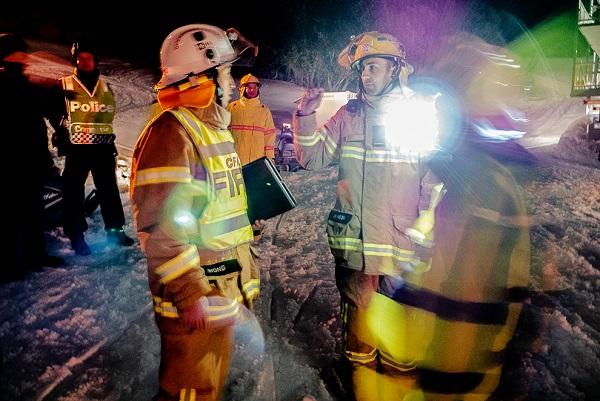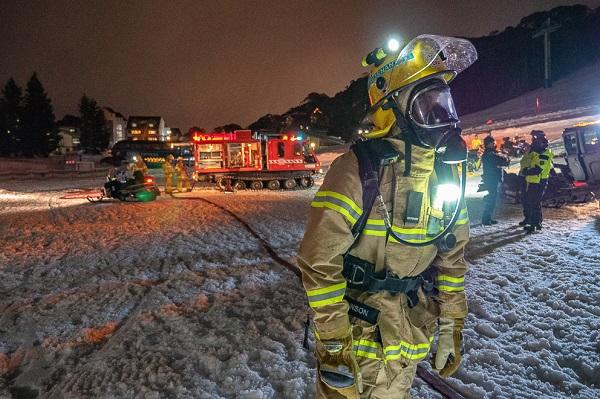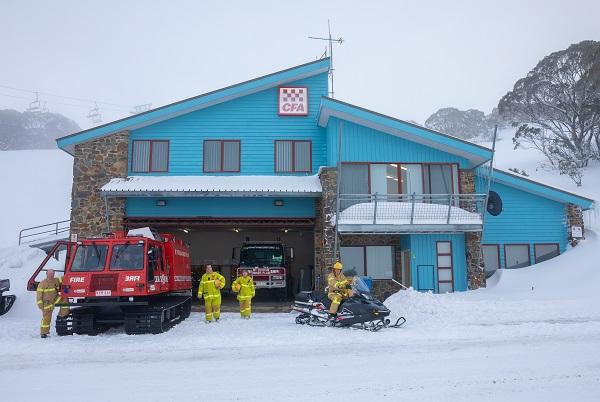As winter draws to a close, the sun is out and the snow is melting. However, with the transition from winter to spring and soon summer, the complexity of the alpine regions remains ever-present.

As winter draws to a close, the sun is out and the snow is melting. However, with the transition from winter to spring and soon summer, the complexity of the alpine regions remains ever-present. CFA is responsible for fire and emergency services to alpine communities at Falls Creek, Mt Hotham-Dinner Plain and Mt Buller. In this column, we recap of some of the work conducted in the alpine space over winter.
The CFA alpine brigades have been had a busy season with the implementation of new oversnow vehicles. The vehicles (Can-Am side-by-sides, Ski-doo snowmobiles) have been used predominantly for crew transport, as well as having their capability further explored. These vehicles have been a valuable asset for the CFA fleet and alpine brigades. The alpine firefighters have also been busy training in the diverse conditions experienced throughout a winter season, from deep powder snow to hard slippery ice, and now spring slush. This training has allowed our firefighters to maintain skills, as well as acquire new skills, in a variety of conditions. There were several multiagency exercises that were also conducted, which helped strengthen the ties between key alpine resort stakeholders.
White helmets were present on the white snow in late July and early August, with the arrival of CFA leaders including Deputy Chief Officer Stephanie Rotarangi, Operations Managers Paul King and Stewart Kreltszheim, and Anthony Ramsay (Executive Director), Tim Smith (Manager Asset Management) and Joel Read (Engineering), all from CFA Infrastructure Services.

DCO Rotarangi’s portfolio is Operational Capability and Growth. A component of this complex portfolio is the CFA Alpine Strategy. DCO Rotarangi made trips to each of the major alpine resorts during winter to obtain a clear understanding of the alpine risk, complexity and brigades.
During these visits, itineraries included:
- Meeting the alpine resort brigade members, their brigade management teams and the alpine Operations Officers
- Tour of CFA alpine fire stations and resort villages, with each mountain having different characteristics
- Demonstrations of the CFA alpine fleet, especially the enhanced capability of new CFA oversnow vehicles
- Participating in brigade training; including a simulated response to staff accommodation high on Mt Buller, and a breathing apparatus drill at Mt Hotham
- Collaboration with key alpine stakeholders: emergency services agencies such as Victoria Police, SES, Ambulance Victoria, Resort Management Boards, Ski Patrol and other key alpine community partners including Chamber of Commerce, Alpine Associations
- Detailed understanding of the complexity of alpine fire and emergency response; from brigade resourcing, access and egress difficulties alpine weather conditions and its relationship to PPC.
- Discussions with alpine brigades on new generation oversnow vehicle typology, led by Joel Read and focussed on end user input and experience
During the Falls Creek visit, there was a further opportunity for Operations Manager Adrian Gutsche to meet the Falls Creek brigade members, and to represent the North East Region and District. That same day at Falls Creek, the Victorian Police Chief Commissioner Graham Ashton and some of his senior staff were also present. A lunch hosted by the Falls Creek Resort Management (FCRM) and QT Resort provided an opportunity for key village stakeholders to have an open discussion around alpine emergency management and collaboration.

After this engagement, the Victorian Police stakeholders were hosted by FCRM, Ski Patrol and CFA with a tour in the CFA side-by-sides) to demonstrate capability for transport within the village and ski area environment.
Credit must go to North East Community Safety Manager Darren Viney and North East Community Safety Coordinator Andrew Arnold, who have worked tirelessly in the area of community education. This work included the training and development of a volunteer team to assist in the delivery of alpine resort community education at Mt Buller. The alpine resort community education has been tailored specifically for village stakeholders, resort workers, commercial operators and lodge owners/managers; a dynamic space with significant risk, where ongoing engagement and education is crucial.
To manage alpine risk effectively, CFA plans to undertake a detailed analysis that explores the different treatment options available. This will include costs, limitations and benefits, and will develop a long term sustainable approach to Alpine Service Delivery.
Emergency management and stakeholder engagement is vital in all parts of Victoria. However, the unique isolation of the alpine resorts has created close knit communities that CFA is proud to be a key contributor within; to protect life, property and the environment, and to support the resilience of our alpine communities.
Author: James Wong